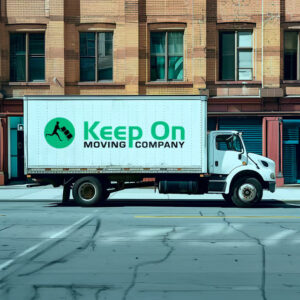As a reputable moving company, Keep On Moving understands that the rising costs of moving have become a topic of concern for many individuals and families. Whether you’re considering hiring professional movers or contemplating a DIY move, the price tag may come as a surprise. In this blog post, we aim to shed light on the primary drivers behind the current increase in moving costs.
Moving has never been a cheap endeavor, and there’s no one-size-fits-all answer to the question, “How much does it cost to move?” Each move is unique, and factors such as distance, size, and services required can greatly impact the cost. To gain a better understanding of the expenses involved, you can refer to our comprehensive guide on moving costs and considerations.
However, it’s important to note that the decision to hire a moving company should not be solely based on price. It’s crucial to evaluate the credibility and reputation of moving companies thoroughly. Unfortunately, the moving industry is not immune to scams or unprofessional practices, often disguised by enticingly low prices. We urge customers to exercise caution and prioritize reliable and trustworthy movers over suspiciously cheap alternatives.
Now, let’s delve into the factors currently driving up moving company prices, albeit hopefully temporarily.
Capacity:
Moving companies heavily rely on truck space to transport customers’ belongings. When there is a shortage of available space, the cost of that space increases. This shortage is primarily influenced by two key factors: a scarcity of truck drivers and a surge in demand.
Truck driver shortages have been a growing concern for the industry, making it increasingly challenging to find and recruit qualified drivers for large tractor-trailer trucks. This shortage directly impacts the availability of moving trucks and subsequently drives up costs.
Furthermore, the COVID-19 pandemic has sparked a significant increase in people seeking to relocate from expensive areas to more affordable regions. This surge in demand, coupled with the limited capacity to transport belongings, creates a supply and demand imbalance, leading to higher prices. It’s worth noting that flexibility in your move date can potentially save you money since securing available capacity becomes more difficult during high-demand periods.
Labor:
Skilled labor plays a vital role in providing a smooth and efficient moving experience. Professional movers undergo extensive training to handle various types of items, including delicate and valuable possessions. However, the current labor market poses challenges for moving companies as they contend with labor shortages and the need to attract and retain skilled movers.
The shortage of available workers in today’s economy has led to increased wages and higher labor costs. Movers perform physically demanding tasks, such as packing, loading, and unloading heavy objects, often involving navigating staircases and working long hours. To attract and compensate qualified moving crews appropriately, moving companies adjust their pricing structures, raising hourly rates or overall costs.
Fuel and Insurance:
The cost of diesel fuel has been steadily increasing over the past few years, with prices soaring from around $3 to $5+ per gallon. Insurance rates for moving companies have also experienced notable hikes. Since a typical truck holds between 100-150 gallons of fuel and achieves roughly 5-8 miles per gallon, the fuel expenses for a single move can amount to approximately $2500 for a 1000-mile journey.
These rising fuel and insurance costs impact moving companies significantly. For van lines operating hundreds of trucks simultaneously, the doubling of these expenses translates into millions of dollars in additional annual expenditures just to keep their fleets moving efficiently.
Parts:
Tractor-trailers, due to the heavy workload they endure, are prone to breakdowns. While not inherently unreliable, the engines of these trucks can experience failures over time. However, sourcing and acquiring the necessary parts to repair these engines have become more challenging and expensive due to supply chain disruptions.
The ongoing shipping problems and scarcity of diesel engine parts have resulted in delayed delivery times and increased prices. Longer wait times for essential parts further reduce the capacity of moving shipments, exacerbating the already limited availability. Consequently, moving companies face higher costs in repairing their trucks and maintaining operational efficiency.
It’s crucial to note that the rising costs of moving cannot be attributed solely to greedy companies seeking higher profits. In reality, transportation costs have surged rapidly across industries, and many moving companies are struggling to keep up. According to data from the Bureau of Labor and Statistics, the Transportation CPI has risen by nearly 70% between 2020 and 2022.
Addressing the issue of escalating moving costs requires a collective effort. Solutions involve tackling capacity constraints, attracting more labor, mitigating fuel and insurance expenses, and resolving supply chain challenges related to parts procurement. Only then can we anticipate a significant reduction in moving prices.
At Keep On Moving, we are committed to providing our customers with the best possible moving experience. We understand that cost is a crucial factor for anyone planning a move, and we strive to offer valuable assistance and information to help you make informed decisions. Our learning hub provides a wealth of articles that cover every step of the moving process, offering insights to help you save money and choose the best option for your specific needs.
While the current circumstances may result in higher moving costs, we are dedicated to delivering top-notch service and ensuring your relocation is as smooth as possible.






